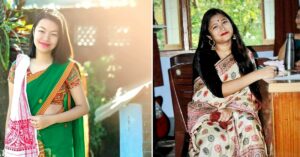I was In Bhuj During the Earthquake. Why I am Telling Stories of Other Survivors Now
Akshat Chaturvedi was only 22 when an earthquake hit Bhuj in 2001. What he saw in the aftermath altered the course of his life, which he has since dedicated to working with the World Bank’s Disaster Risk Management Programme. More recently, he has revived the inspiring stories of survivors like him in a curated book called Resilience in Kutch, Stories of Earthquake Survivors in Bhuj.

At 8.46 a.m. on India’s 52nd Republic Day in 2001, Bhuj, in Gujarat was ravaged by an earthquake measuring 7.7 on the Richter scale.
The visuals of the devastation and destruction are still etched in our minds. The loss of lives, property, and livelihoods was unprecedented, and everything seemed bleak.

Akshat Chaturvedi, who was then 22 years old, was one of the survivors of the earthquake. Since then, he has gone on to rebuild not only his own life, but also that of many others from his community.
Speaking to The Better India, he says, “Kutch is home for me, it’s where I grew up. It’s known to be a disaster-prone area, but nothing prepared any of us for what transpired in 2001.” A theatre enthusiast, Akshat was part of a Kutchi film project then, and tells me how he had wrapped up a segment on 25 January 2001 and went to bed late in the evening.
“I remember being jolted awake on the morning of 26 January, and saw everything around me shaking.”
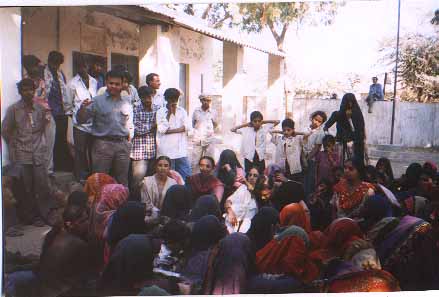
“My first thought was to reach out for my pantheon computer, because I did not want the screen to fall and shatter. I was on the second floor and realised that I had nowhere to run. If I had to die, it would be in that room,” he says. Akshat recalls how daunting those two minutes were. There was chaos everywhere, and nobody knew what had hit them.
He continues, “People ran out of their homes in whatever state they were – some were taking a bath and ran out stark naked, while others were still in bed when the earthquake struck and tumbled out in night clothes.”
“After the shaking stopped, I was on the streets trying to see how I could be of help. The images I saw will forever be etched in my memory. The disfigured bodies, the mountains of debris and rubble, and everything around me broken. There was no street that remained intact, and everywhere you looked, people were stranded,” Akshat says.
Like most children, Akshat too remembers reading about earthquakes when he was little. But until that day, he had never experienced one. “In a matter of minutes, so many of us were all rendered homeless and had to spend the next month camping in tents outside our homes, because we were not sure of when an aftershock would occur,” he recalls.
‘I’ve lost everything – you go save yourself’
“As I walked the streets, I came to this house where only the door frame was intact, everything inside had collapsed. An elderly lady, in her early 80’s sat with her skull exposed with blood oozing out,” Akshat says, recalling how distraught the lady looked. He asked her if he could take her to the nearby clinic to get her wound checked, but she refused. She looked into what remained of the house and said she had lost everything. She asked Akshat to move on and find safety.
“Her words still come back to me. She said I could do nothing for her, and asked me to go and find shelter.”
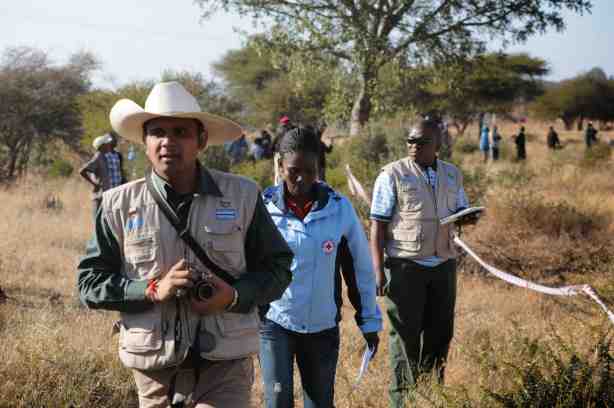
“Here was an old woman who was dying, but even in that moment, was urging me to find a safe place,” he says. Akshat remembers the fear he felt as he walked the streets that day and says it’s a feeling he will never be able to shake off.
With all the loss that he saw around him, what also struck him was the amazing resilience that the people of Bhuj displayed. He says the way the entire community rallied together and worked towards rebuilding their home instilled hope in him.
These experiences have shaped Akshat’s life and career. He is now working with the World Bank as a consultant for the Disaster Risk Management programme. He has since also volunteered with the United Nations (UN) to work with NGOs dedicated to rehabilitation work post the earthquake. “I remember working volunteering with the UN, without even realising that it was a big deal. I learnt everything on the go,” he says.
Akshat’s work, all focussed on disaster management, has taken him to countries like Botswana, Bangkok, Japan. He is now based in Washington DC.
To showcase the spirit of the people of Bhuj, Akshat curated a book called Resilience in Kutch, Stories of Earthquake Survivors in Bhuj. Some excerpts from the book are as below.
A photographer who lost an arm

Haresh, who hails from a family of photographers, lost not just an arm that fateful day, but also his wife, 13-year-old daughter, and 15-month old son, who were all crushed by a water tank. While life has been terribly unfair to Haresh, what one notices immediately is the smile he wears and the resilience he carries in his heart. He says, “I have to smile. If you worry too much, it only benefits the doctor.”
‘There was a time I could not step out of my home. Now I feel I can do anything.’
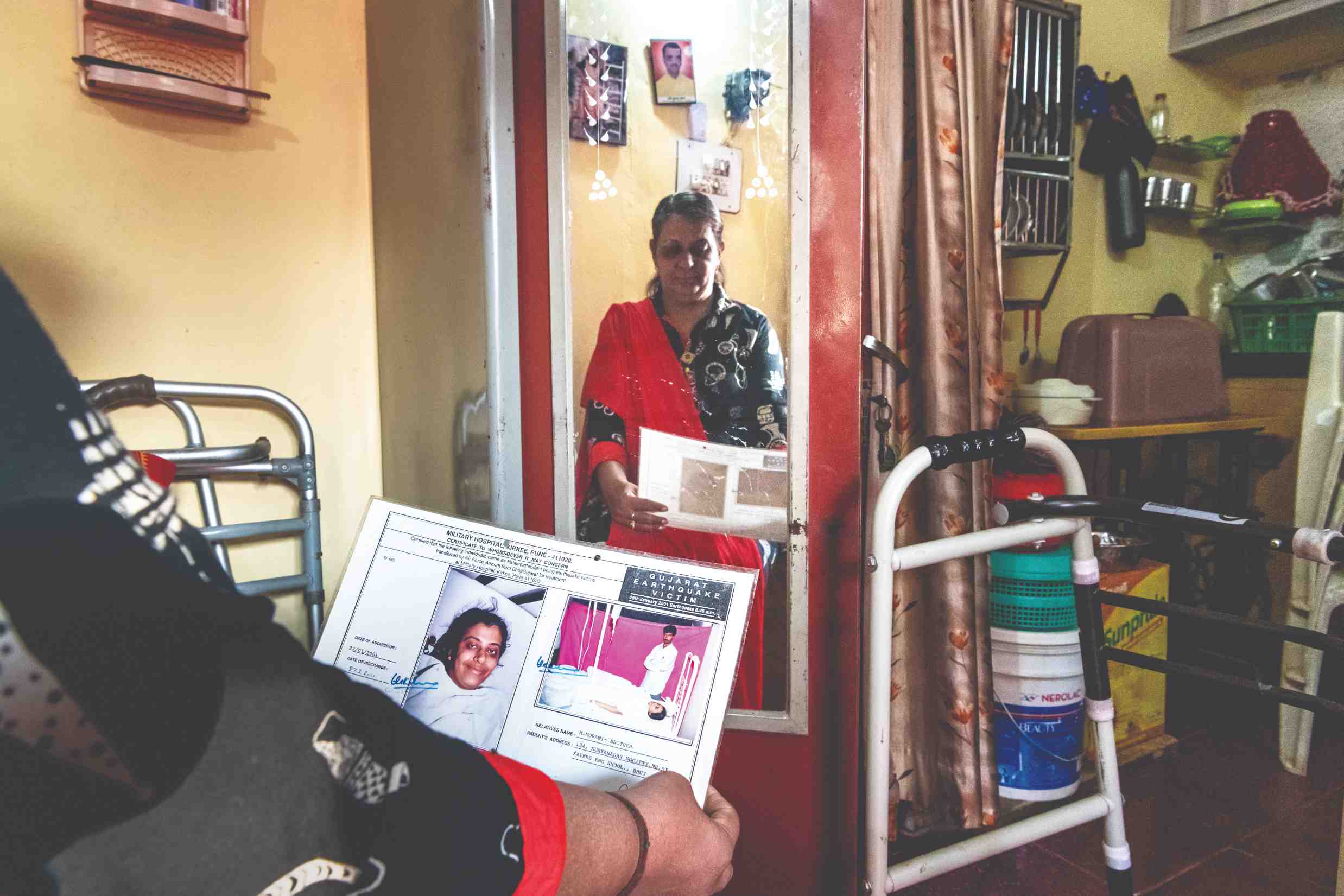
For Jenab, 26 January 2001, was a holiday she had been looking forward to. The previous day, just as she was getting her bath water ready, she felt everything around her shake. In trying to run out of the house, Jenab and her husband Altaf got stuck under a mountain of rubble and were badly hurt in the process. Despite having gone through seven surgeries and losing her right arm, Jenab survived but lost the love of her life. Today, she has her independence in the form of her own apartment, steady work selling snacks and candy at a local school, and the strength she built from her experience in the years after the quake.
‘Even before the actual earthquake my life was in shambles’
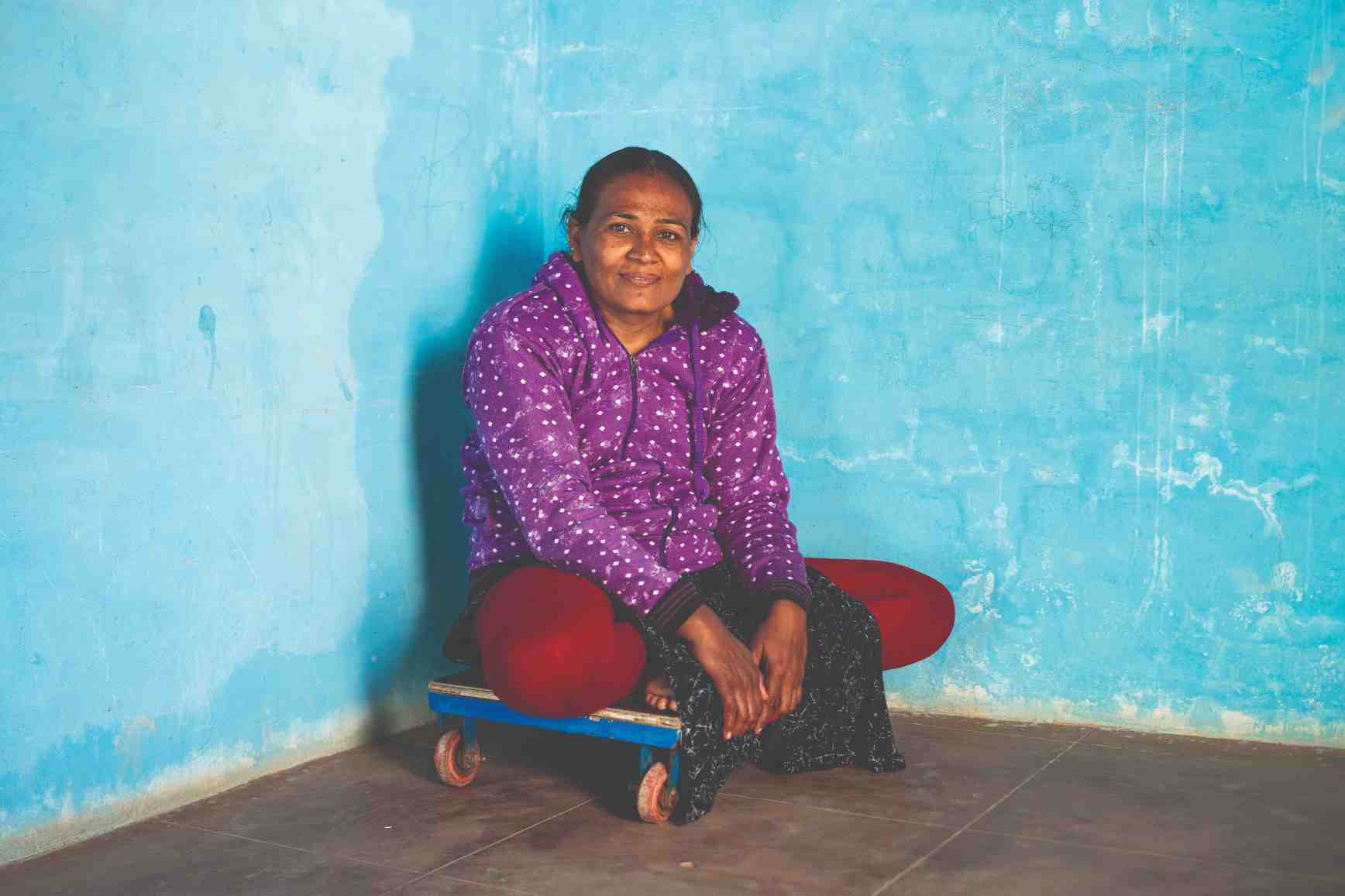
Pregnant during the 2001 earthquake, Mayaba was carrying a girl child, and found herself in a troubled marriage, since her husband did not want to have a girl. Mayaba’s husband and his family had made it abundantly clear that they would not pay for a girl child’s existence. It was during this time that the earthquake struck, leaving Mayaba with a permanently damaged lower body. With no chance of recovery, she slipped into depression and even tried to commit suicide a few times. It was her daughter, Chetnaba, who she was told to abort, who saved her life and gave her a reason to live. Today, the mother and daughter are best friends, and share a very special bond. “My daughter is everything to me,” she says.
These stories, and more, of human resilience have been beautifully captured in the book. To order a copy, you can click here.
(Edited by Divya Sethu)
This story made me
-
97
-
121
-
89
-
167
Tell Us More
We bring stories straight from the heart of India, to inspire millions and create a wave of impact. Our positive movement is growing bigger everyday, and we would love for you to join it.
Please contribute whatever you can, every little penny helps our team in bringing you more stories that support dreams and spread hope.







